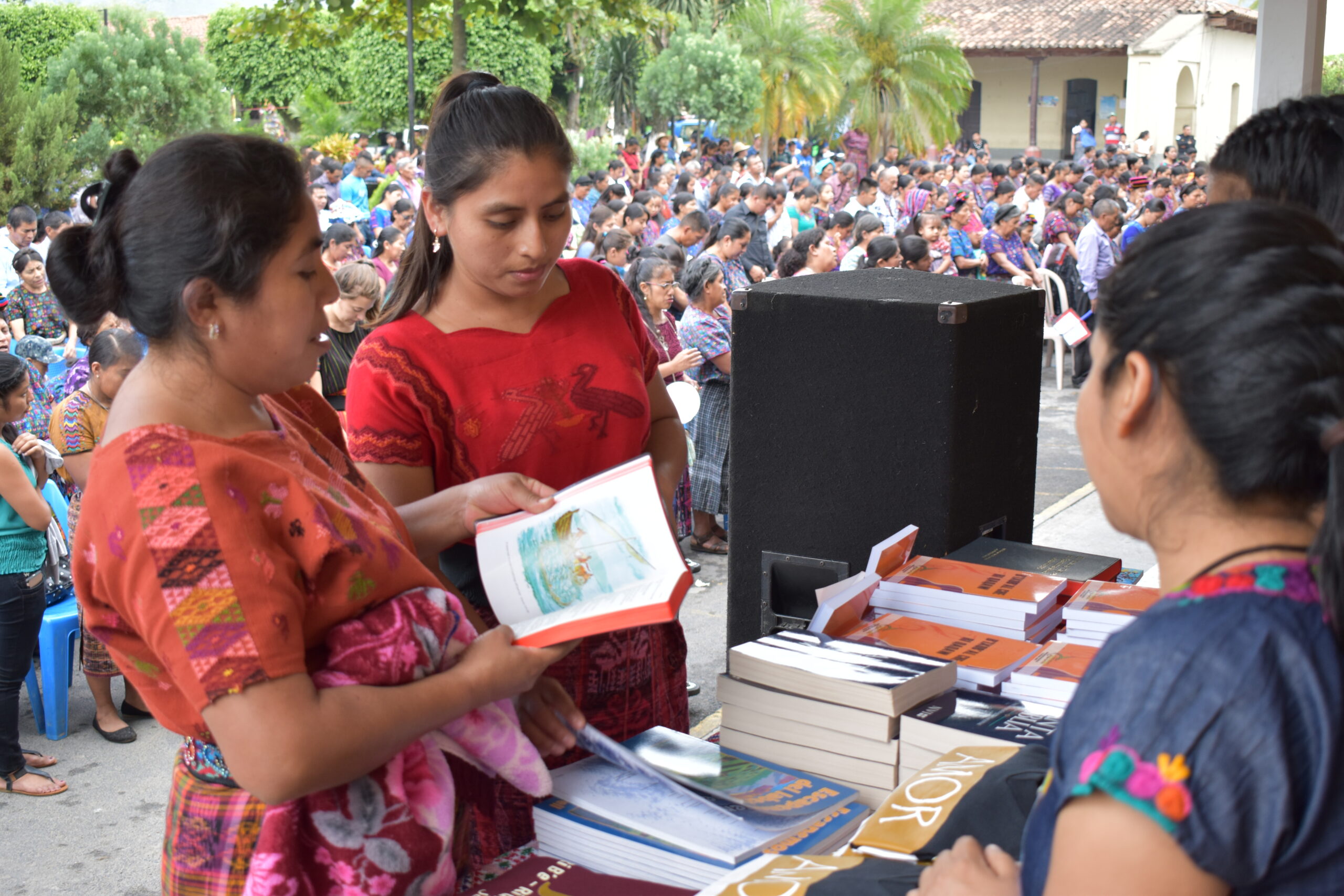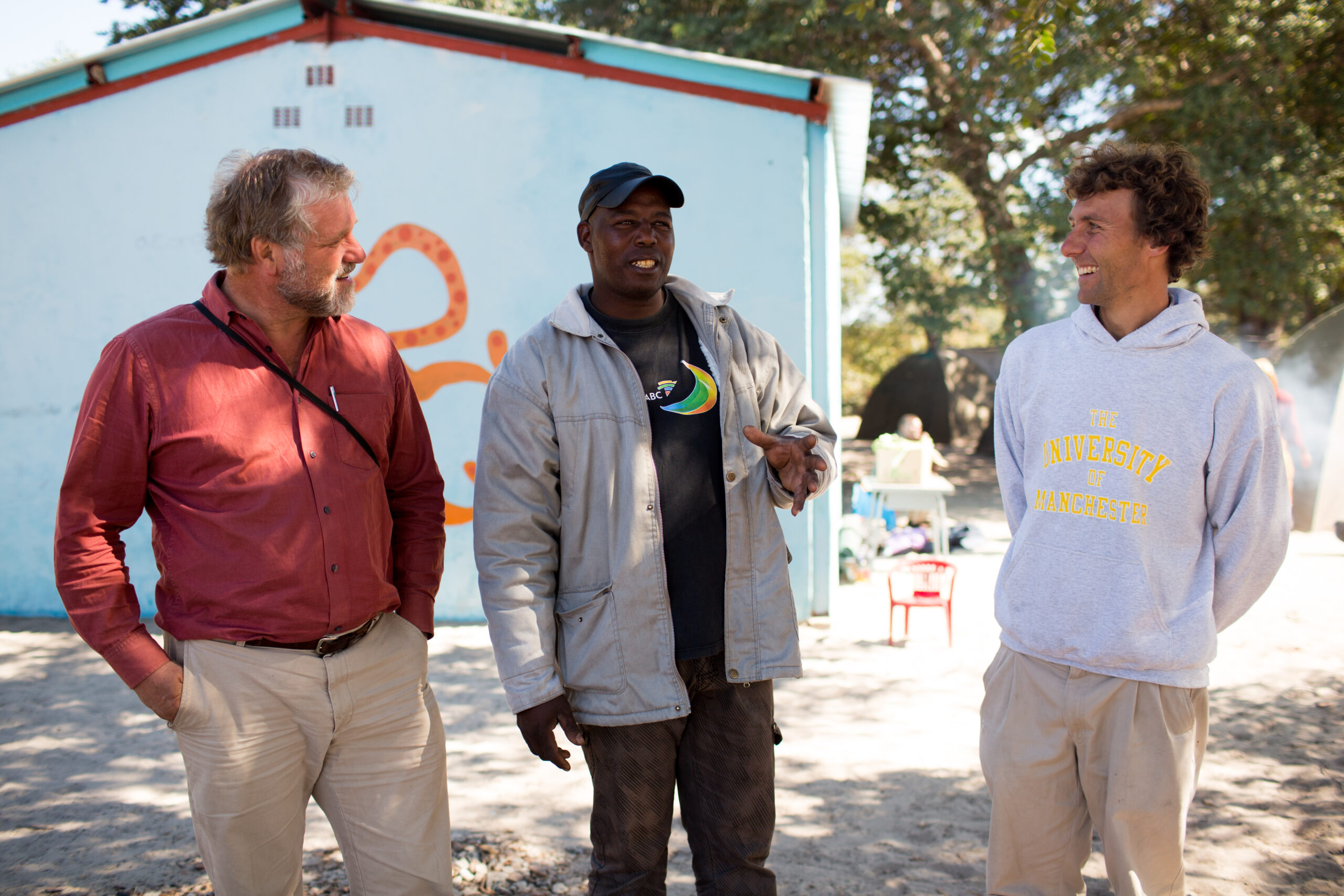The Common Framework is a set of translation principles that guide every project Seed Company partners with.
From the very beginning, Seed Company’s guiding principles for translation have been to:
- get accurate, usable Scriptures into the hands of a people group as soon as possible, and
- affirm and honor each community’s ownership over their own project.
Why the Common Framework?
Historically, Bible translation organizations have often felt pressured to choose between accuracy and acceleration. The Common Framework was designed to meet both of these needs.
Acceleration is not about a race to reduce the number of years to translate a Bible. It is about introducing God’s Word into the community with faster access to usable Scriptures.
This method breaks down the work for each translation project into goals that are achievable, on average, within a three-year timeline—creating a culture of success with a clear view of the finish line.
Getting God’s Word into People’s Hands Sooner
Best of all, people don’t have to wait until the entire Bible is finished to receive God’s Word! As soon as books or stories are community tested, consultant checked, and revised as needed, they are distributed among the people, whose excitement continues to feed the work. The people’s hunger for more Scripture encourages translation teams to press on despite challenges.
When individuals meet a God who speaks their language, their hearts and minds soften to receive the truth. Their families, and their communities, take notice. And God’s Word begins to change everything.
The 4 Fundamental Principles of the Common Framework
1. Ownership
Bible translation is incarnational because Jesus, the Word made flesh, was incarnational. The ultimate goal is transformation of both lives and communities. Therefore, the local expression of the Church owns the vision and responsibility for Bible translation work. Each people group is the host, rather than the target.
We believe in a free exchange of knowledge and skills, helping local partners build capacity so that Scripture impact is ongoing and sustainable. Local ownership paves the way for God’s Word to truly make its home among each people group.
So the Word became human and made his home among us. He was full of unfailing love and faithfulness. And we have seen his glory, the glory of the Father’s one and only Son.
— John 1:14
2. Partnership
Bible translation takes place in a holistic context. It should never be isolated from the church or from other Great Commission organizations that provide services like health care, clean water, or education. Any adjustments to goals, timelines, and budgets are discussed and agreed upon in partnership.
Together, partner organizations and the people who will be receiving Scripture determine translation goals and products. For example, in oral communities, we may partner with Faith Comes By Hearing to record books of the Bible on MP3 players and smartphone apps. Through the Luke Partnership, Seed Company might oversee a translation of Luke that can then be scripted for the “JESUS” film.
But our bodies have many parts, and God has put each part just where he wants it. How strange a body would be if it had only one part! Yes, there are many parts, but only one body. The eye can never say to the hand, “I don’t need you.” The head can’t say to the feet, “I don’t need you.”
— 1 Corinthians 12:18–21
3. Stewardship
Projects are well developed, well resourced, well managed, and accountable. They’re designed with short-term Scripture access goals for immediate impact to achieve a greater, quicker return on investment. For example, the first chapter of Luke might be distributed on a smartphone app while the rest of the chapters are still being translated. And because of strategies (such as audio and video) that give access to Scripture for non-readers, people don’t have to become literate to receive access to Scriptures in their language.
We believe God blesses and multiplies what is wisely stewarded.
The master was full of praise. ‘Well done, my good and faithful servant. You have been faithful in handling this small amount, so now I will give you many more responsibilities. Let’s celebrate together!
— Matthew 25:21
4. Relationship
All of God’s mission is for all of God’s people. Bible translation processes seek to build and demonstrate unity within the diversity of the worldwide body of Christ. In the Common Framework, collaboration happens among the people translating God’s Word, the people receiving it, and the people funding and praying for the work.
Every time I think of you, I give thanks to my God. Whenever I pray, I make my requests for all of you with joy, for you have been my partners in spreading the Good News about Christ from the time you first heard it until now.
— Philippians 1:3–4
The 7 Steps of Bible Translation
Bible translation itself is a highly structured, systematic process designed to ensure that Scripture is accurate to the original texts and sounds natural to the people receiving it. The process includes both sophisticated software and human minds that take the culture into account.
Seed Company follows these seven proven steps to accelerate the translation of God’s Word for each people group:
1. Launch
Seed Company helps bring together and equip locally led translation teams with clearly defined time frames, outcomes, milestones, and budgets for the work.
2. First Draft
Translators analyze a passage for meaning and then draft it in their language.
3. Team Check
Translators collaborate with one another to check each verse for accuracy and clarity.
4. Comprehension Test
Translators give the drafted Scripture to their community and request feedback to improve clarity and accuracy.
5. Back Translation
The draft is translated “back” into the language of wider communication so that non-native consultants can check it for accuracy.
6. Consultant Check
A consultant joins the team to check the translation, making sure it is both accurate and natural-sounding.
7. Publishing
Translators carefully proofread and typeset, or record, a final version of the completed Scripture.
Watch a video about how Bible translation works:
4 Tools Used in the Common Framework
1. Translator’s Workplace
A foundational library of reference materials selected for the work of Bible translation, this extraordinary collection includes Bibles, Greek and Hebrew texts, dictionaries, commentaries, translation handbooks, articles, and other reference materials. Logos Bible Software also assists in providing excellent resources to assist translators.
2. Paratext
Paratext is the world’s leading software application for translation, checking, and revision of the Bible from the original text into the languages of the world. Collaboration features enable teams to work together to produce higher-quality translations in less time.
3. Render
Render is a software tool that helps oral communicators create culturally relevant oral materials for their own language group. Developed and designed with the oral communicator in mind, it guides the user through an entirely oral translation process by listening and speaking.
4. HearThis
HearThis is known as “Scripture recording made easy” because translators don’t need technicians, and they don’t need to wait until the translation is done to start using it.
The Common Framework in Action
Since it was introduced, the Common Framework has been adopted by many other Bible translation organizations, like our partner Deaf Bible Society. That’s because, all over the world, it has consistently met the need for faster access to usable Scriptures through short-phased projects. Discover how one man named Justus embraced the principles of the Common Framework to bring God’s Word faster to his community in Kenya.
Done reading about Justus? Learn more about how Bible translation begins in a community.



























